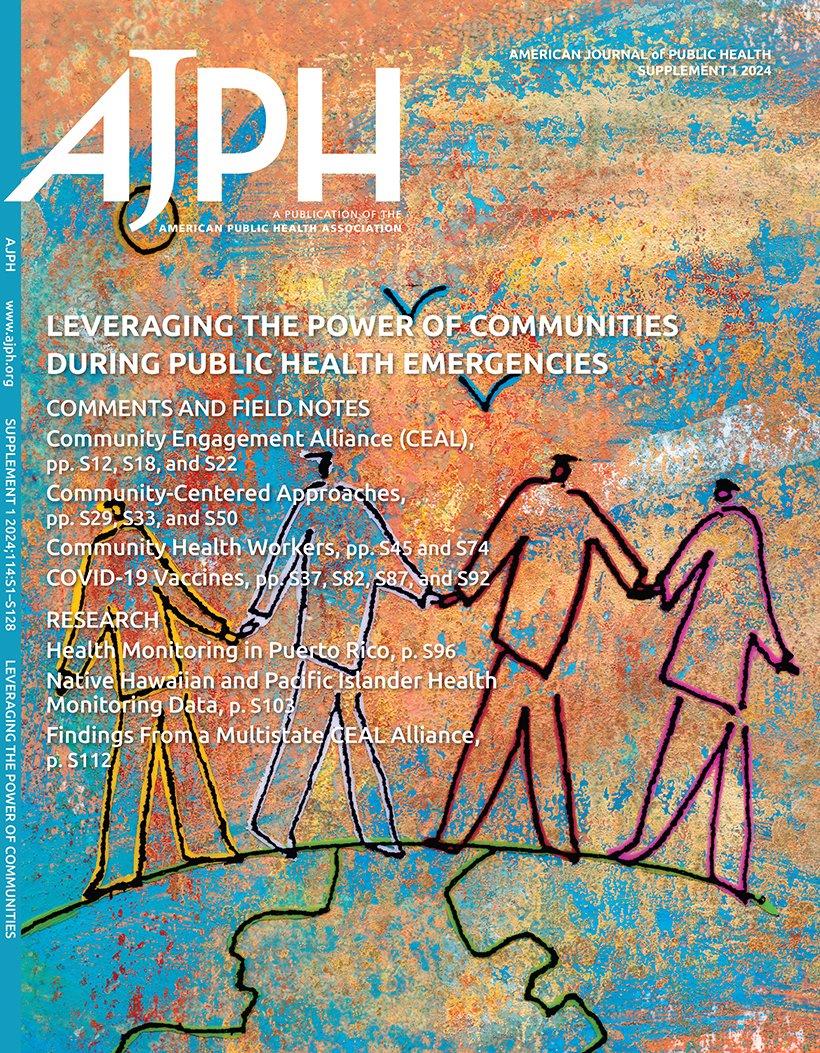Trends in Driving Under the Influence of Alcohol and Cannabis Among Young Adults in Washington State From Before to During the COVID-19 Pandemic.
IF 9.6
1区 医学
Q1 PUBLIC, ENVIRONMENTAL & OCCUPATIONAL HEALTH
引用次数: 0
Abstract
Objectives. To examine trends in young adult self-reported driving under the influence of alcohol (DUI-A), cannabis (DUI-C), and simultaneous alcohol and cannabis use (DUI-AC) in a state with legalized nonmedical cannabis use from before to during the COVID-19 pandemic. Methods. We used logistic regression and annual statewide data from the Washington Young Adult Health Survey to assess DUI behaviors from 2016 to 2021. Results. Both prepandemic yearly changes in prevalence and deviations from those trends during the pandemic years were small and not statistically significant. However, prevalence estimates were alarming: 12.0% of participants reported DUI-A, 12.5% reported DUI-C, and 2.7% reported DUI-AC. Exploratory moderation analyses indicated a relative increase in DUI-A during 2020 among 4-year college students relative to young adults not attending 4-year colleges. Conclusions. Young adults in Washington State continued to engage in risky DUI behaviors during the pandemic. College students may have increased their likelihood of DUI-A during COVID-19. Public Health Implications. Young adults, for whom vehicle crashes remain a leading cause of death, showed little change in DUI behaviors during the COVID-19 pandemic. There is continued need for young adult DUI prevention efforts. (Am J Public Health. 2024;114(S8):S698-S701. https://doi.org/10.2105/AJPH.2024.307767).COVID-19 大流行之前至期间华盛顿州年轻人在酒精和大麻影响下驾车的趋势。
目标。在 COVID-19 大流行之前至期间,在一个非医疗使用大麻合法化的州,研究年轻人自我报告的在酒精(DUI-A)、大麻(DUI-C)以及同时使用酒精和大麻(DUI-AC)影响下驾驶的趋势。方法。我们使用逻辑回归和华盛顿州青年健康调查的年度全州数据来评估 2016 年至 2021 年期间的酒驾行为。结果大流行前的流行率年度变化和大流行期间的趋势偏差都很小,没有统计学意义。然而,流行率估计值令人震惊:12.0% 的参与者报告了 DUI-A,12.5% 报告了 DUI-C,2.7% 报告了 DUI-AC。探索性调节分析表明,2020 年期间,相对于未就读四年制大学的年轻人,四年制大学生的酒驾-A 比率相对增加。结论。在大流行病期间,华盛顿州的年轻人继续从事危险的酒驾行为。在 COVID-19 期间,大学生可能会增加酒后驾车的可能性。对公共卫生的影响。车祸仍然是导致年轻人死亡的主要原因,在 COVID-19 大流行期间,年轻人的酒驾行为几乎没有变化。仍有必要继续开展预防青壮年酒驾的工作。(Am J Public Health.2024;114(S8):S698-S701. https://doi.org/10.2105/AJPH.2024.307767).
本文章由计算机程序翻译,如有差异,请以英文原文为准。
求助全文
约1分钟内获得全文
求助全文
来源期刊

American journal of public health
医学-公共卫生、环境卫生与职业卫生
CiteScore
9.50
自引率
3.90%
发文量
1109
审稿时长
2-4 weeks
期刊介绍:
The American Journal of Public Health (AJPH) is dedicated to publishing original work in research, research methods, and program evaluation within the field of public health. The journal's mission is to advance public health research, policy, practice, and education.
 求助内容:
求助内容: 应助结果提醒方式:
应助结果提醒方式:


